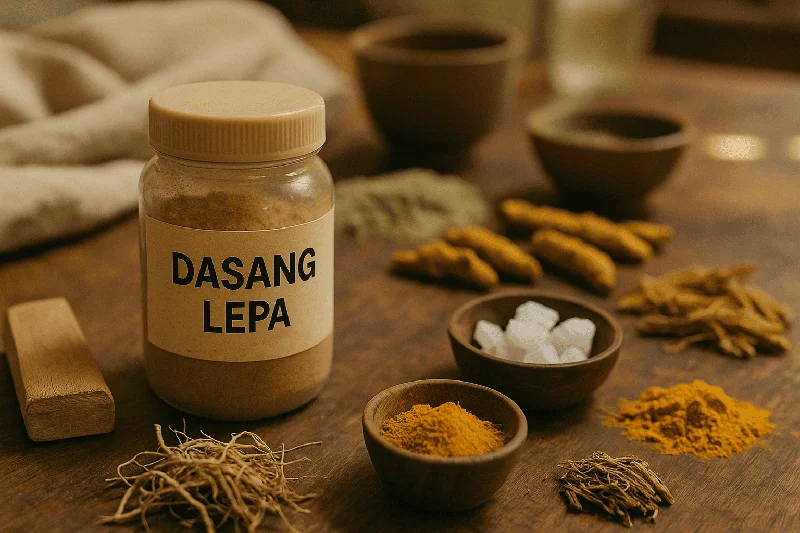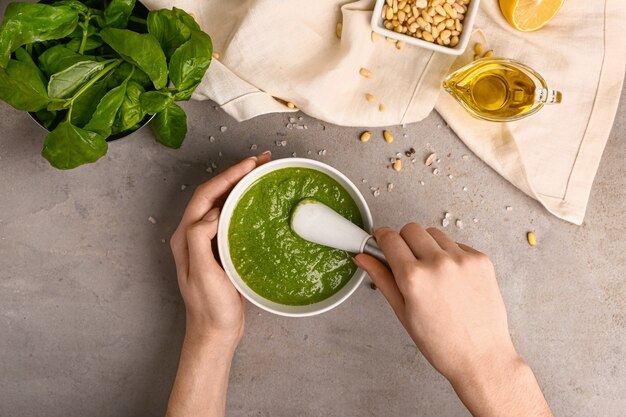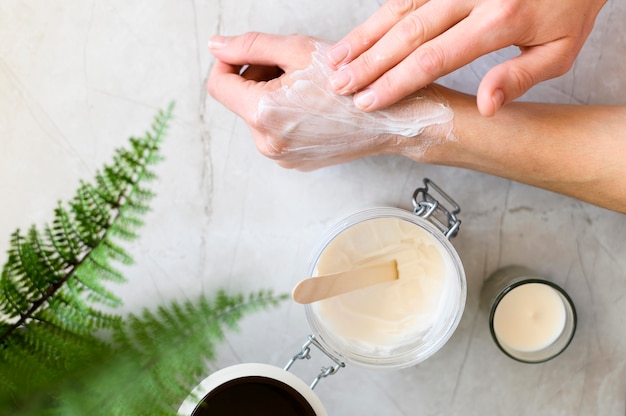Ask Ayurvedic doctor a question and get a consultation online on the problem of your concern in a free or paid mode. More than 2,000 experienced doctors work and wait for your questions on our site and help users to solve their health problems every day.
Shop Now in Our Store
Dasang Lepa: Uses, Research, and Health Benefits

Dasang Lepa: A Comprehensive Guide to an Age-Old Herbal Remedy
In a rapidly evolving world of high-tech treatments and instant cures, it can be easy to overlook traditional remedies that have stood the test of time. Dasang Lepa—an herbal formulation believed to originate from Asian medicinal systems—has garnered interest among healthcare professionals and holistic practitioners for its potential therapeutic properties. Although it is sometimes labeled as merely a “folk remedy,” emerging research is exploring the science behind Dasang Lepa’s effects on inflammation, wound healing, and general well-being.
In this comprehensive article, we’ll delve into the history, composition, scientific evidence, and practical applicationsof Dasang Lepa. We’ll also discuss safety considerations and offer tips for using this traditional paste effectively in everyday life. Whether you’re a medical professional, a holistic enthusiast, or someone simply curious about natural healthcare practices, this guide aims to shed light on an intriguing herbal remedy.
Table of Contents
- What Is Dasang Lepa?
- Historical and Cultural Context
- Composition and Key Ingredients
- Potential Health Benefits
- Scientific Evidence and Research
- How to Use Dasang Lepa
- Comparisons to Other Herbal Pastes
- Frequently Asked Questions (FAQ)
- Conclusion
- Disclaimer
What Is Dasang Lepa?
Dasang Lepa is traditionally prepared as a topical herbal paste (sometimes referred to as a “lepam” in various South and East Asian practices). The name “Dasang” likely derives from a blend of herbs used in the formulation, though the exact etymology may vary depending on cultural contexts. In many regions, Dasang Lepa is applied to the skin to help with ailments such as muscle pain, minor wounds, or inflammatory conditions.
Because of its herbal origins, it is often categorized under alternative or complementary medicine, alongside Ayurveda, Traditional Chinese Medicine (TCM), and Tibetan Medicine. It is crucial to differentiate reputable, evidence-based uses of Dasang Lepa from unverified health claims. As interest grows in integrative healthcare, many practitioners are now seeking more rigorous scientific validation for its application.
Historical and Cultural Context
Roots in Traditional Medicine
Historical references to herbal pastes like Dasang Lepa can be found in ancient Sanskrit and Tibetan texts, where the application of herbal or mineral-based formulations was common for injuries and chronic ailments. In certain Himalayan regions, local healers—sometimes referred to as amchis in Tibetan medicine—have used variations of Dasang Lepa for centuries.
Crossover With Other Systems
Dasang Lepa shares conceptual similarities with:
- Ayurveda: Uses “lepams” for targeted local therapy.
- Tibetan Medicine: Employs herbal compresses and pastes for balance of the body’s energy.
- Unani Medicine: Advocates local application of herb-based salves for pain and inflammation.
Though each system has its own rationale, the unifying principle is that topical therapy can provide direct, localized relief without the systemic side effects often seen with oral medications.
Composition and Key Ingredients
One of the most intriguing aspects of Dasang Lepa is its complex herbal composition. The specific ingredients can differ depending on regional availability and the condition targeted. Common ingredients often reported in literature and by traditional practitioners include:
-
Turmeric (Curcuma longa)
- Known for its curcumin content, which has documented anti-inflammatory and antioxidant effects 11.
-
Ginger (Zingiber officinale)
- Renowned for its analgesic properties; widely used to help reduce muscle soreness and inflammation 22.
-
Camphor (Cinnamomum camphora)
- Provides a cooling sensation on the skin and is believed to enhance blood flow to the area when used topically.
-
Neem (Azadirachta indica)
- Traditional antibacterial and anti-fungal agent used to help cleanse and protect wounds 33.
-
Boswellia (Boswellia serrata)
- Contains boswellic acids, which are studied for their role in inflammation modulation 44.
Each herb is ground or processed into a fine powder before being combined with a liquid base (often water, but sometimes oil or other binders) to form the paste-like consistency that defines Lepa. The synergy of these herbs is a key principle in herbal medicine, where the combined effect is believed to be greater than the sum of individual components.
Potential Health Benefits
1. Pain Management
Many proponents of Dasang Lepa advocate its use for muscle and joint pain. Traditional practitioners have used it to provide localized relief for conditions like arthritis, lower back pain, and muscle strains. The presence of ginger, turmeric, and boswellia—each associated with analgesic properties—forms the foundation of this claim.
Key Takeaway: While anecdotal evidence and some preliminary studies show promise, more rigorous clinical trials are needed to definitively establish Dasang Lepa’s efficacy for pain management.
2. Anti-Inflammatory Effects
Topical anti-inflammatory agents are commonly used to address swelling and inflammation. Curcumin (from turmeric) and boswellic acids (from boswellia) are individually recognized in several peer-reviewed studies for their anti-inflammatory properties. When combined, these ingredients may offer symptomatic relief for conditions characterized by inflammation, though how effectively they penetrate the skin barrier remains an area of active research 4,54,5.
3. Wound Healing
Some local traditions also use Dasang Lepa to support wound healing. Herbal ingredients like neem provide antimicrobial properties, potentially assisting in preventing infection. Limited laboratory studies suggest that formulations containing neem and turmeric may accelerate tissue repair 66. However, standardized protocols and clinical evaluations in this domain are limited, and more well-designed human trials are needed.
Scientific Evidence and Research
In recent years, integrative medicine researchers have begun to explore the biological impact of formulations similar to Dasang Lepa:
-
2020 Study in the Journal of Ethnopharmacology
This pilot study evaluated a multi-herb paste with ingredients comparable to those found in Dasang Lepa for osteoarthritis knee pain. The results indicated modest improvements in pain scores, although the sample size was small 77. -
2021 Meta-Analysis in the Journal of Complementary and Integrative Medicine
While focusing primarily on topical turmeric applications, the meta-analysis noted consistent reductions in inflammatory markers (like C-reactive protein) in mild-to-moderate osteoarthritis patients, hinting at possible benefits of similar herbal formulations 88. -
Ongoing Clinical Trials
There are ongoing clinical trials registered in databases likeClinicalTrials.gov seeking to evaluate the efficacy and safety profile of herbal combinations. While these do not exclusively test Dasang Lepa, they can shed light on how multi-ingredient herbal pastes work on a physiological level.
Expert Consensus: Leading institutions such as the
National Center for Complementary and Integrative Health (NCCIH) in the United States emphasize the need for larger, better-designed studies to draw definitive conclusions about any herbal therapy, including Dasang Lepa.
How to Use Dasang Lepa
Application Methods
Traditionally, Dasang Lepa is:
- Applied Directly: A thick layer is spread over the affected area—be it a swollen joint, a sore muscle, or a superficial wound.
- Covered with Gauze or Cloth: Some practitioners recommend wrapping the area in breathable fabric to help the paste retain contact with the skin for a set duration.
- Left to Dry: After a specified time (often 30 minutes to a couple of hours), the paste may dry, signaling that it’s time to gently wash it off with lukewarm water.
Typical Duration and Dosage
- Duration: Applications often range from 20 minutes to an hour. Longer application times may be recommended in chronic pain scenarios or for deeper penetration.
- Frequency: Some regimens call for daily application for two weeks, while others suggest using it only as needed—e.g., for acute injuries or post-workout soreness.
Safety Precautions
- Patch Test: Herbs like turmeric or ginger can irritate sensitive skin. Apply a small amount to the inner forearm and monitor for redness or itchiness.
- Avoid Open Wounds: Unless specifically formulated and recommended by a healthcare provider, avoid using Dasang Lepa on deep or actively bleeding wounds.
- Consult with a Healthcare Professional: If you have chronic health conditions (e.g., diabetes, autoimmune diseases), or if you’re on anticoagulant therapy, seek medical advice before applying any herbal paste.
Comparisons to Other Herbal Pastes
While Dasang Lepa is often hailed for its unique blend of herbs, several other herbal pastes share overlapping ingredients and therapeutic aims:
- Mahanarayan Oil Paste (Ayurveda): Focuses heavily on sesame oil as a carrier to support deeper tissue penetration.
- Shiunko (Traditional Chinese Medicine): Emphasizes wound healing and includes herbs known for qi balancing properties.
- Balms with Menthol or Eucalyptus (Folk Traditions Worldwide): Provide a cooling or warming sensation to help alleviate pain.
Each formulation has its own philosophical underpinnings, but there is a shared belief that topical therapies can play a significant role in pain relief and healing when used responsibly.
Frequently Asked Questions (FAQ)
-
Is Dasang Lepa safe for children?
- The safety profile in children is not well studied. Always consult with a pediatrician or qualified herbalist before using Dasang Lepa on minors.
-
Can I leave Dasang Lepa on overnight?
- While some practitioners suggest overnight application for severe pain, do a patch test first and ensure no skin irritation occurs.
-
Does it stain clothing or skin?
- Ingredients like turmeric can leave a yellow stain. Protect clothing and wash the area with mild soap and water after use.
-
Where can I purchase Dasang Lepa?
- Specialty herbal shops, certain online retailers, and integrative medicine clinics may carry it. Always look for quality certifications and reputable brands.
-
Can pregnant or breastfeeding women use Dasang Lepa?
- There’s insufficient scientific data on its use during pregnancy or lactation. It’s best to consult a healthcare provider for personalized advice.
Conclusion
Dasang Lepa stands as a fascinating example of an ancient herbal remedy intersecting with modern medical interest. While not yet backed by large-scale clinical trials, preliminary findings and historical use suggest potential benefits for pain management, inflammation reduction, and possibly wound healing. As more rigorous research unfolds, Dasang Lepa may solidify its standing in integrative medicine programs worldwide.
For now, the key lies in informed and cautious use:
- Seek qualified advice for chronic conditions.
- Perform patch tests to rule out allergic reactions.
- Monitor your response, and document improvements or side effects.
By balancing traditional wisdom with current scientific inquiry, both healthcare professionals and patients can make more informed decisions about integrating Dasang Lepa into a comprehensive wellness plan.
Disclaimer
This article is for informational purposes only and does not constitute medical advice. Consult your doctor, pharmacist, or a qualified healthcare professional before using Dasang Lepa or any other herbal remedy—particularly if you have pre-existing health conditions or are taking prescription medications. The information provided here is based on current research and traditional knowledge, which may continue to evolve with further studies.
Call to Action
We hope this deep dive into Dasang Lepa has clarified some of the science, tradition, and practicalities surrounding this herbal paste. If you found this article helpful, share it on social media or forward it to a friend who might benefit. Feel free to leave a comment with your experiences or subscribe to our newsletter for more articles on holistic health and evidence-based natural remedies.
Stay informed, stay curious, and stay healthy!
This article is checked by the current qualified Dr. Harsha Joy and can be considered a reliable source of information for users of the site.



